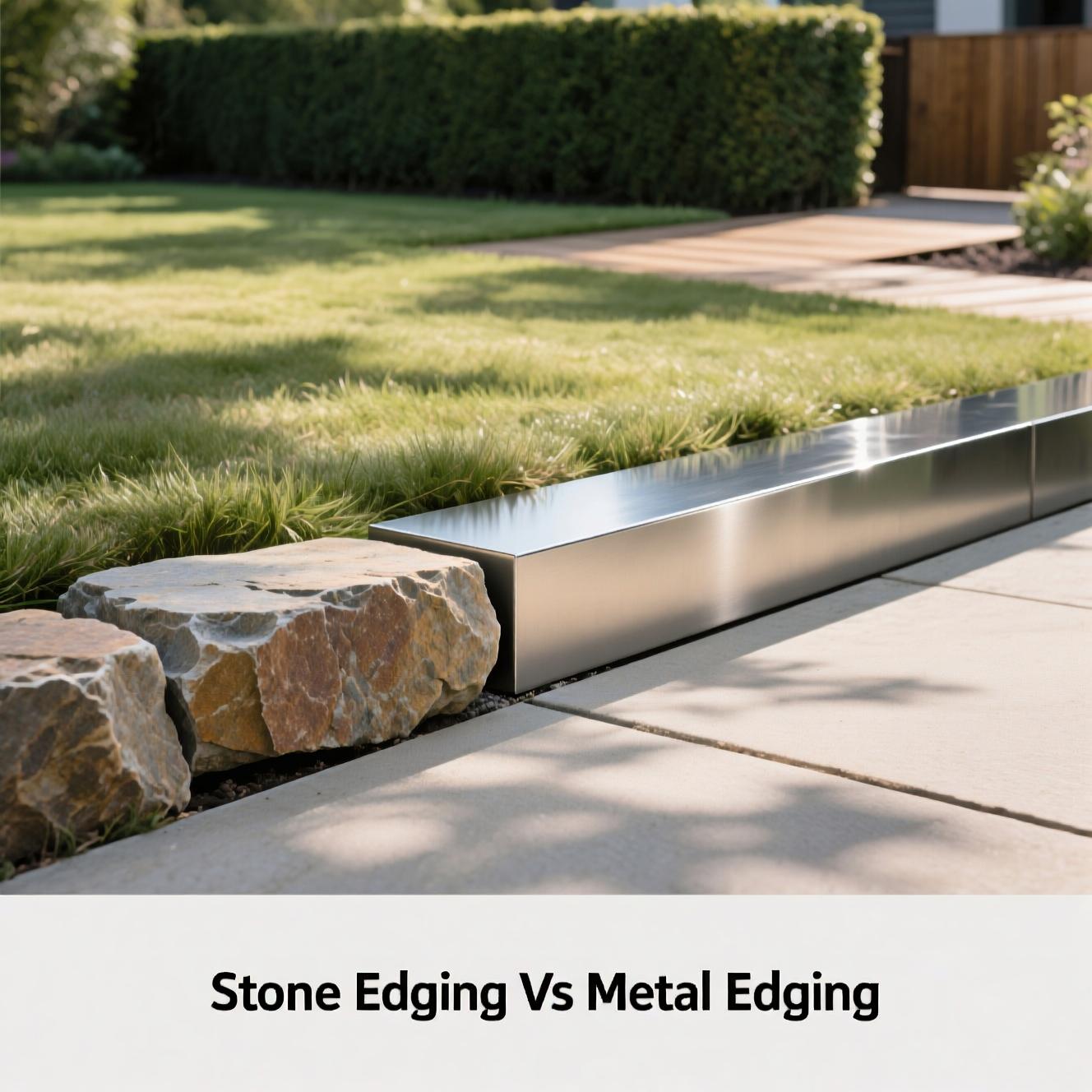| Feature | Stone Edging | Metal Edging |
|---|---|---|
| Weed Prevention | Forms a heavy, physical barrier that blocks invasive grass and weeds when properly installed. | Creates a sharp, impenetrable underground barrier that blocks the lateral growth of roots. |
| Effectiveness | Very effective, as its weight and solidity create a definitive break between the lawn and garden bed. | Highly effective, acting as a “wall” against weeds. Its success depends on being installed deep enough to block roots. |
| Durability & Lifespan | Extremely durable and long-lasting. Granite can last over 50 years, while other stones can last 20–40 years. | Very durable and resistant to weather and impact from garden tools. Steel can last for over 20 years. |
| Aesthetics | Provides a natural, rustic, or timeless appearance that can add significant character to a landscape. | Offers a sleek, modern, and clean look. It is often less conspicuous, creating a crisp, professional line. |
| Installation | Installation is more labor-intensive due to the weight of the stones. Professional installation is common. | Lighter weight makes it easier to handle and install. It is flexible and can be shaped to create curves. |
| Maintenance | Requires virtually no maintenance once installed. It may shift over time and need occasional adjustment. | Requires little to no upkeep. It holds its shape and is resistant to damage from lawn equipment. |
What is the installed cost of stone versus metal edging for landscape borders?
The initial investment is a key factor when comparing stone and metal edging for your landscape. Stone edging can be visually appealing but typically incurs a higher installation cost. Metal edging, while durable, also presents a higher price point than many plastic alternatives. Understanding these costs per linear foot is essential for budgeting extensive garden borders.
Natural stone edging can range from $10 to $30 per linear foot installed, while metal edging often falls within a similar range of $15 to $30 per linear foot, according to HomeAdvisor estimates. This comparison highlights the need to consider long-term value when planning projects.
| Metric | Stone Edging | Metal Edging |
| Installed Cost ($/Linear Ft) | $10 – $30 | $15 – $30 |
| Projected Service Life (Years) | 25+ | 50+ |
| Annual Upkeep (Hrs/Yr) | Low | Low |
| Pest/Moisture Resistance | High | High |
How does metal edging’s durability measure up against other landscape materials?
Metal edging is recognized for its robust construction, offering a lasting solution for defining garden beds and pathways. Its resilience makes it a preferred choice for homeowners seeking low-maintenance and aesthetically consistent borders that stand up well to environmental stressors.
What factors influence the lifespan of landscape edging like steel and stone?
Understanding the factors that impact the longevity of materials like steel and stone edging is key when planning landscape borders. Environmental elements such as extreme weather, fluctuating temperatures, and prolonged moisture can accelerate wear. Soil composition and the presence of tree roots also play a role; heavy clay soils exert pressure, while sandy soils offer less stable support. Steel edging, while durable, can be susceptible to rust if exposed to constant moisture without protective coatings.

Angelina Everly leads the editorial desk at Live Green Gardens, blending practical plant care, hands-on product testing, and approachable outdoor styling. She focuses on step-by-step how-tos, buyer’s guides, and small-space makeovers that work in real life and real budgets. When she’s not comparing pruning shears or setting up a drip kit, you’ll find her creating cozy corners with planters, solar lights, and pollinator-friendly picks—always with clear pros/cons and safety notes so you can buy once and garden happy.

